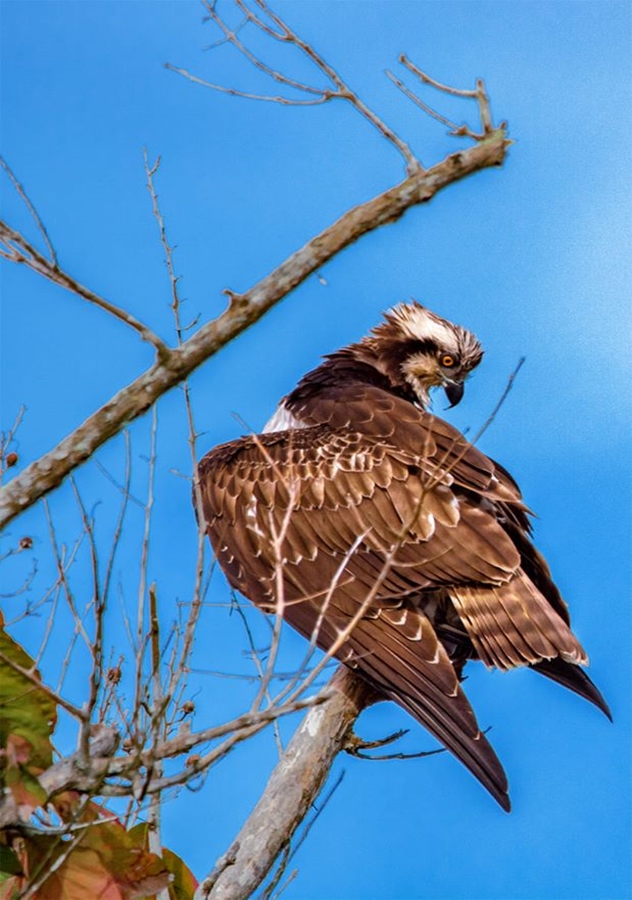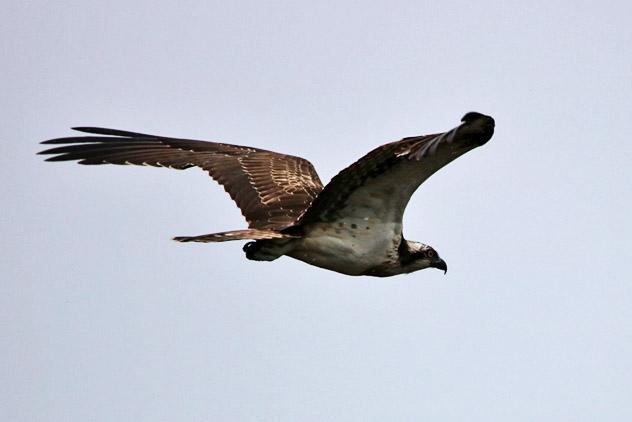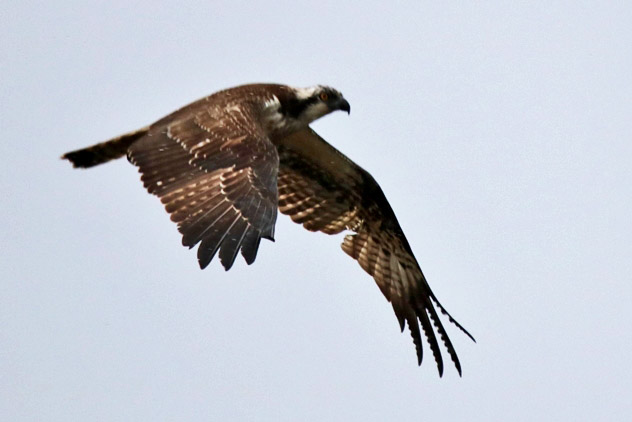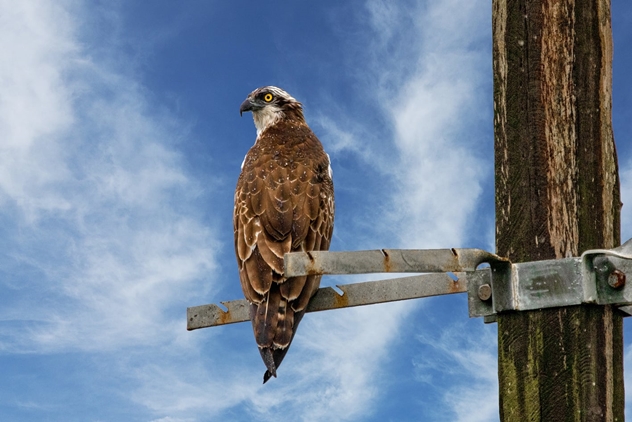Ospreys, also called fish hawk, are large raptors reaching more than 60 cm in length and 180 cm across the wings. They are a diurnal, fish-eating bird of prey that live along seacoasts, lakes and waterways. They are brown on the upperparts and predominantly white on the underparts, with some white on their heads and distinctive black eye stripes that go down the side of their faces.
Ospreys are excellent anglers. Flying some 10 to 40 metres over the water to hunt, an osprey plunges feet first to seize a fish in its long, curved talons. According to many studies, Ospreys successfully catch fish on at least 1 in every 4 dives, with success rates sometimes as high as 70 percent. With a reversible outer toe (like owls) that allows them to grasp with two toes in front and two behind and a grip secured by sharp spicules on the underside of the toes, the bird carries its prey to a favourite perch to feed. Ospreys can close their nostrils during dives to keep out water. In flight, ospreys will orient the fish headfirst to ease wind resistance. Sometimes after feeding the osprey flies low over the water, dragging its feet as if to wash them.
Ospreys usually build nests in tall trees or on ledges of cliffs. The nest is a bulky structure, composed of haphazardly arranged sticks. The same nests may be used by many generations of birds, becoming huge in the process. Two to four white eggs marked boldly with dark brown blotches are laid, with both parents helping to incubate. Osprey eggs don’t hatch all at once but the hatching is often staggered, with the first chick emerging up to five days before the last one. The older hatchling dominates its younger siblings, and can monopolize the food brought by the parents. If food is abundant, chicks share meals in relative harmony; in times of scarcity, younger ones may starve to death. The young fledge in six to eight weeks.
One of only six land-birds with a cosmopolitan distribution, the osprey is the second most widely distributed raptor species, after the peregrine falcon. Generally, ospreys reach sexual maturity and begin breeding around the age of three to four. The typical lifespan is 7–10 years, though a few can grow to as old as 20–25 years.
I have encountered ospreys on a few occasions at Kuala Baram Wetlands. They like to perch on roadside utility poles and wire. I have not seen them in my last few trips to Kuala Baram Wetlands. I hope that when the Movement Control Order is over, I will see them again at Kuala Baram Wetlands.
 CY@CY Says Welcome to my dreamscape. Where a Lim is also a Ling.
CY@CY Says Welcome to my dreamscape. Where a Lim is also a Ling.




